The Real Market With Chris Rising – Ep. 66 Martha Weidmann
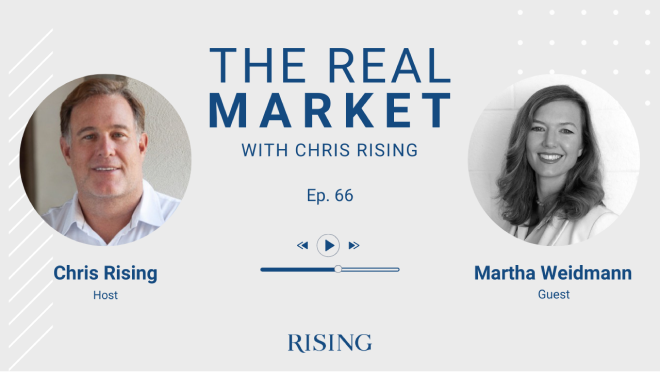
Speaker 1 (00:02):
Welcome to the Real Market with Chris Rising, the only podcast that brings the real estate conference panel to your headphones. You’ll hear from superstars from every realm of commercial real estate, the biggest brokers, the most well-known architects, the largest investors, and the most visionary developers. Learn what they do, how they do it and what drives their success. We’ll discuss the latest trends across regional markets, capital flows, both national and global, and we’ll explore technology’s role in shaping all of them. We’ll take a clear-eyed look at where we’ve been, where we are now and what’s to come. Real conversations, real experts, real insights. This is the Real Market.
Chris Rising (00:50):
Welcome to the Real Market with Chris Rising. I’m really pleased to have Martha Weidmann with me today. She’s the CEO and co-founder of NINE dot ARTS. Martha was introduced to me, what I find kind of interesting these days, via Twitter. And then we started having some email back and forth and after understanding a little bit about NINE dot ARTS, I was like, “Wow, this could be something really interesting as we talk about a post-COVID world, as we talk about what life is going to be like for people who work in offices, for people who really work in cities. So Martha, I’m really pleased, and excited to have you on the podcast. Thanks for being here.
Martha Weidmann (01:28):
Thanks so much for having me. I’m happy to be on the show today.
Chris Rising (01:32):
So I don’t steal your thunder, maybe just would you mind giving the audience a little bit about what NINE dot ARTS is and how it’s grown and just a kind of elevator pitch?
Martha Weidmann (01:43):
Yeah. So NINE dot ARTS is a corporate art consulting company and we help bring impact and value to real estate through art and culture. So sometimes people don’t always think how to create a place-making strategy or how to attract people to a building, but it’s that last finishing touch that usually defines our memory of a place. So we focus on those finishing touches, but we plan for them years before you see them. So we’ve completed over 825 commercial real estate projects in the United States, and we’ve contributed over $35 million to the creative economy. We started about 12 years ago in the last recession. And after being going through two different recessions have learned a lot about not only running the business, but how to really transform places to create a comeback.
Chris Rising (02:38):
Well, I think it’s really amazing how, what you do has grown in importance. I mean, I go back long enough in real estate to remember when one of the first things that would get struck from a budget was any sort of expensive art or any sort of lobby experience, and then have watched as companies like related in Brookfield, it’s like to think ourselves as well. And EQ have said “No, that experience of coming to a lobby, whether it’s the office lobby or the space lobby is really important.” But I will tell you that my experience I’ve always kind of said, “Well, I guess my architect is going to handle that.” And very rarely, going back years, did I ever get involved.
Chris Rising (03:19):
That’s changed. But how have you seen that evolve? I mean, I remember being in meetings where people would be like, “Let’s just get the cheapest art we could get. What photos can we just put up?” What’s been your experience in how that’s evolved?
Martha Weidmann (03:33):
Well, I think the evolution has really happened on the audience and the user side, right? Tenants recognize quality. People recognize quality now. So the quality of your building should be reflected in everything that you do. Your branding, your marketing, your finishes. I don’t know how popular office buildings are today, but if you’re building a really beautiful, state-of-the-art glass structure, or you’re putting a really gorgeous skin, like what’s a really beautiful building that you’ve seen recently and what were the finishes on the exterior that you could think of?
Chris Rising (04:11):
Well, they’re all very modern and they look very health and wellness, a lot of glass. A lot of glass in buildings these days. You don’t really see the 1980s with the marble and the tile. I mean, at least that’s what I’ve been seeing. I go to Hudson Yards and there’s a lot of examples of that.
Martha Weidmann (04:28):
Yep. You see some really high tech glass and steel structures. In different times, that might’ve been really ornate stone and those kinds of things, the thoughtfulness with which you create a building should also be the thoughtfulness, which with you think about the experience and the finishing touch. So I’ll give one example of how our industry started. So the Chase Plaza in Manhattan was built by Rockefeller in the 1960s. When that building was complete, he walked through that space with his architect and he said, “Gosh, it’s a great building, but when you’re in here it feels so institutional, just empty.”
Martha Weidmann (05:12):
His architects said, “Well, just put some art on the walls.” And Rockefeller hired the then curator of the MoMA, Dorothy Miller, who then created what has now become this internationally recognized corporate art collection. Art has then become this way of communicating a higher level of thinking and association of supporting your community and a way of embodying the values. When you say we build beautiful buildings, we build places that people want to be, you’ve got to take that through at every level.
Martha Weidmann (05:54):
Honestly, better to put nothing on the wall than something cheap because something, a poster or a reproduction at this point, people know the difference. They recognize quality and when they see something like that, it just diminishes the value of the entire place. So better to delay your gratification of putting art up and do it when you can do it right, rather than to diminish the quality of the space overall.
Chris Rising (06:19):
Yeah. A very good point. I mean, I look at my career and I look at a definitive moment being obviously 9/11, where then lobbies went out of their way to look like they’re the safest possible places they could be. And then as we hit the great financial crisis, you saw this pushback against that. I had a business partner on one of our projects at PacMutual in LA, and he would say all the time, “People don’t know that they say what they sense, but they sense it.” They’re like they’ll be in a place that either feels safe or it doesn’t feel safe. It feels like it’s a warm, inviting place or it doesn’t. It’s not so as visual. That visual is all there, but it’s that sense you have inside.
Martha Weidmann (07:00):
Yes, absolutely. One of the things that I always describe to people is that when we do our job really well, you actually won’t notice the detail of what we did because it won’t fade to the background. It will be this experience of a really intentional, thoughtfully well done place. You’ll remember it and you’ll tell your friends about this place because you love it so much. You might remember a few details. Like at the Dairy Block, people remember the hand, this large-scale sculpture that’s hanging from the ceiling. Nobody notices the fact that there’s this highly detailed aircraft cable that’s suspended from some steel structural beams that are behind the wood paneling in the ceiling and that the lighting is perfect, right? No one notices all those details in construction. Nobody notices the fact that this hand represents the brand of the maker and the maker is all about handcrafted artisan spaces.
Martha Weidmann (08:01):
So the sculpture represents that in so many ways, it’s an actual hand showing that something is handmade. It’s from upcycled materials, so you’re reusing. And then it’s also this open hand, which is a historic cultural symbol of welcome. It’s an open extended hand. So there’s all these kinds of subliminal things that are there creating this wonderful experience that you feel, but it’s almost hard to put your finger on.
Martha Weidmann (08:30):
What you notice is when it’s done poorly. So for example, everyone in their life probably has to go through some sort of medical treatment, right? You have to pick a doctor or maybe you have to have, I don’t know, some sort of surgery on your shoulder. So if you were to go around to pick which surgeon, let’s say you get referred to a few people and you want to pick which surgeon is going to do your shoulder surgery.
Martha Weidmann (09:02):
This is an elective experience. Let’s say you walk into a surgeon’s office. It hasn’t been updated since 1989 and they have some posters on the wall that have clearly faded over time, the things that were once like vibrant colors, they were kind of these cheap posters and they’re now in metal frames and maybe the glass is cracked or has some spills on it, and the colors are all now faded to these grayish blues. And what used to be vibrant color is now like a faded lavender. And the chairs haven’t been updated and the carpet is old.
Martha Weidmann (09:41):
Then you go into another physician’s office and the details are right, the furniture has been updated, the lighting is lovely. Maybe there’s a painting behind the couch when you walk in. Which one are you going to pick?
Chris Rising (09:57):
Yes.
Martha Weidmann (09:57):
Right? And the reason is you feel when you walk into that space as well, then you feel like the people there care. You feel their intention. You feel that they’re experts because they have thought through every single detail of this place. So you know you can trust them with every detail of your 20-year lease, your surgery, whatever it is, you know that you can trust the people that built this space. It’s like a way of communicating a feeling.
Chris Rising (10:31):
What I find interesting is, it’s easy to look backward, and I remember when I was young in the business in the late ’90s and we would represent big CEOs and titans of business almost all white male and everything was dark wood and really macho pieces of art and things like that. Then we’ve gone through a couple of things we mentioned, and I look back today to where we are today and the best lobbies, the best space doesn’t have any of that feel anymore.
Chris Rising (11:05):
Now, obviously I’d like to think, I don’t know if the numbers back it up, but I like to think it’s because it’s a more inclusive business environment and you have more than a mono thinking about art that should be there, but in your career, have you seen anything definitive about how things started to evolve away from the very masculine wood paneling and art, that would be reflective of that? What’s been that line for you if you were to look back? Because it’s certainly changed as you were saying that hand and what that represents is a lot different than the artwork of 25 years ago?
Martha Weidmann (11:40):
Well, one thing that has changed significantly, and I’ll give you a little couple teaser points from our state-of-the-art report, that’s going to get published in the fall. So we actually publish a report we surveyed. We sent out this survey to 20,000 people in the commercial real estate sector to find out what is the impact of art on real estate. And this is our second publication of this. What has changed even just in the past two years is that we’ve seen an increase of art that is large scale. We’ve put together a paper called Big Artists and Big Demand, and I think that was already starting to happen during COVID-19, but that really accelerated for a few reasons. One, you can do a giant iconic mural on your building or something on the exterior that has an impact to differentiate maybe even just beyond what the architecture is.
Martha Weidmann (12:46):
So how do you create these iconic installations that become landmarks to the architecture? One thing to consider is in the scheme of things, large-scale art is relatively affordable compared to re-skinning a building. So that’s something to think about. Number two is that you could do the artwork outside. Number three is that it’s so big and viewing distance and social distance go hand in hand. So you could stand really far away and see something and analyze it. It could be a landmark, an outdoor piece. You can even watch it being built in a safe environment for everyone.
Martha Weidmann (13:30):
So that became very popular. So that’s still very much trending is large scale murals. Also trending is sculpture. People are now seeing you can use sculpture as a way to differentiate. And almost everyone recognizes that sculpture is a relatively unique medium.
Martha Weidmann (13:48):
You can see the hand of the artist. You can see that it was created specifically for this space or custom commission. So people tend to be attracted to sculpture and large scale murals because they’re easy differentiators to associate with an audience that you’re doing something differently and you’re doing something thoughtfully. You can see periods of going backwards in history. You can see, for example, there was a time when in the 1970s, a lot of corporate collections are monoprints or lithographs and they’re generally abstract expressionists. So they might be pretty minimal patterns. And they’re usually framed in metal frames.
Martha Weidmann (14:33):
Then in the 1980s, photography became a pretty popular thing for corporate collections, ’80s and ’90s. And then more recently you see the evolution into things where you can see the artist’s hand a little bit more clearly like a sculpture or a mural.
Chris Rising (14:53):
So let me ask you this, how much of the work that you’ve done has been purely with a private developer where there’s a lot of control and how much is it more in the public private setting? Because I’ve seen some great big fights here in Southern California around art that the developers required to provide and then getting to something that the community will accept. Wow. It can be a battle. So what’s been your experience with that?
Martha Weidmann (15:16):
Well, I love this question. It’s one of my favorite topics to talk about because it is so hotly contested. We work with private developers. I love working with private developers for a few reasons. Number one, when you choose to have artwork as a part of your project, when you choose what artists represents your brand, you’re a lot more invested in the outcome. And then it becomes part of your marketing materials. It becomes part of the sales pitch. It’s so fully ingrained in the vision of what this place is. So we work with private developers because a lot of times cities will have their own staff that must administer the public, our requirement, and what we are seeing now, what’s trending right now is we’re actually being hired by private developers to administer the city process so that there’s more control. So that it feels more intentional with the building itself.
Martha Weidmann (16:20):
What can be kind of aa common challenge is of story we call plop and drop sculpture where this there’s this percent requirement for art and no one’s really thinking about it or planning for it. And then someone at the city says, “Oh, you need to buy something.” Then they put out this call and then all of a sudden they plop like a bronze child on a swing in your lawn and you’re going, “What does that have to do with anything?”
Martha Weidmann (16:48):
So we are more and more being hired by private developers to help manage that process with the city to make sure that the calls are going out to a broader set of artists and to make sure that the selection process is calling with the brand in mind.
Chris Rising (17:05):
I’m not sure if everyone in my audience would understand that it’s one thing to go through entitlement process and get a project approved and all that, and you think you’re done. But the public art process is… And it is. It’s a campaign. It’s a political campaign. You choose something, you think you like it, you’ve got to go in front of the public and persuade people. It’s not a minor thing. I try to tell people when we’ve done certain projects over the years and just the passion people will bring, and if they don’t like something that you’re going to hear it. And you may have wasted a lot of time and money. So it makes all the sense in the world that a developer would hire you to get involved early. So what were you-
Martha Weidmann (17:41):
To manage a committee. We help manage a committee and the process.
Chris Rising (17:46):
That’s right. And the city, the individuals. Well, let’s take a little quick of a U-turn here, and just, how did you get into this? Were you a designer? When you were younger, how did you go from “I really like art and I really liked the art world” to “I want to go deal with a bunch of egomaniacs and tell them that they should like this piece of art to put in their building”? Maybe it’s not like that.
Martha Weidmann (18:13):
Okay. First, I always focus on value creation. I’ll tell you a little bit of how I got here. I love working with developers. I love working in the private sector because we have timelines, we have budgets, we have brands and those sort of constraints, believe it or not, creativity works best with a few really strict constraints around it. So once you put those constraints in place, we can actually operate incredibly effectively. So I love the private sector.
Martha Weidmann (18:48):
To give you a quick backstory. So I’m born and raised in Mobile, Alabama on the Gulf Coast. And I had a pretty unique upbringing in that kind of half of my family is what I would call a blue blood, where they collected antiques. My grandmother was an artist and they were all studying the finer things. And then half of my family was farmers in Mississippi. So they worked with their hands. I learned how to build things from them, paint fences, build houses. So I had a really unique upbringing that involved like construction and working with your hands and then concept and thinking through with your mind, what these ideas mean.
Martha Weidmann (19:33):
That formed through a formal education in arts and communication. I worked in a gallery when I first started in the professional realm. At the gallery, I was a grunt. I did spackling for installations. I ran the events on the evening shift. It was hard work because you’re working really long hours and standing in heels on concrete floors. I know no one feels sorry for me right now, but it really is hard because you’re doing labor part of the day and then you’re having to put on kind of a show face for part of the day as well. But you have to do it all.
Martha Weidmann (20:15):
As the gallery kind of grunt where I started, I was managing one of the events one night and there was a fundraiser for Haley Barbour who was running for governor of Mississippi. There was a big group of people there. One of the couples was really interested in the sculpture, and I was just telling them the story of how this sculpture came to be. It was made from this ancient wood from the El Camino Real in Northern, California. The artists, the sculptor, had some friends who worked for the forest service and had this cache of wood. She created this gorgeous 20-foot tall wood sculpture that looked like a tablet with big golden rings going through it.
Martha Weidmann (20:59):
Absolutely beautiful sculpture. She had driven it down to the gallery in Denver and her horse trailer from her ranch in Montana. It’s just a great story. Phoebe Knapp was the sculptor, wonderful person. And then the people that I was speaking with said they would like to buy that and they bought two sculptures. They said they would like to purchase both of these. And I said, “Fantastic. Let me take down your information. I’ll send you an invoice tomorrow.”
Martha Weidmann (21:27):
This was the biggest sale the gallery ever had. I didn’t even know how to make an invoice. I was just telling the story. I was just telling the story. Here’s just a really cool thing that this person made. And I got a promotion. So that was how it started. I was in my early 20s and then was working as the gallery manager and then was plucked to work for the best art consulting firm in the region, and then took over the company from them in 2009 when they transitioned out to retirement.
Martha Weidmann (22:09):
What’s been really, really fun is figuring out how to scale this business and scale this model. Because when we started, we were working for the most prestigious art consulting firm in the Rocky Mountains, and that was about 600,000 to 1 million revenue per year. Pretty small company doing corporate work. I took on a couple of mentors for my partner and I, and now we’ve grown it to be a $6 million company and it’s growing every single year. That was the fun part of the gallery.
Chris Rising (22:41):
Did you study art history or anything like that in college or in high school? You’ve become an expert. Is it just been because you trial and error and that’s gotten you there, or would you have any formal training?
Martha Weidmann (22:55):
Well, I went to art school. So I am a formally trained artist. In art school, you’re required to study a number of different crafts. So you’re required to study sculpture, painting, drawing, photography, design. You have to fulfill some basic requirements to complete a degree in fine arts. I’m not a great woodcarver, but I can if I need to. I can wood shop all day. There are definitely people who are better at that than me, but yes, it’s wonderful to be able to learn through creating because when you learn through creating, you can then recognize when someone else is doing a really excellent job with it.
Chris Rising (23:44):
Well, you were also a woman running a business. So where did the math skills and the business skills start to come in? When did you go from being an artist to a business woman?
Martha Weidmann (23:56):
As my mother likes to say, necessity is the mother of invention. That was a requirement at a certain point in my life. We were in a challenging situation. The company that we were working for had been sold. It was in a really tough time in that last recession. So there were only a couple of people there who were going to pull it out and my partner and I knew we were going to bring it out kind of like a phoenix from the ashes from the challenges that they had had in that last recession.
Martha Weidmann (24:32):
So I got a lot of coaching from my father-in-law who is actually in the remodeling industry. So I learned business from an engineer who runs a construction company and I checked out books at the library. I still do. I just read business nonfiction. That’s all I read. It’s a bit boring, but the art side is the passion. And the business side has now become a passion as well because it’s an incredible tool. When you know finance, it’s like being able to speak a new language.
Chris Rising (25:11):
This is just an amazing story. It’s a very entrepreneurial story where a passion lead you into a business and then you have to learn how to be a business person. I also loved it that you talked about it coming out of the great financial crisis, because I’ve had the privilege of having a lot of people on this podcast who that experience of losing things or seeing things blow up, drove them in a different way than they thought maybe their life was going to go.
Chris Rising (25:44):
As you look at it, because you can look back by 10 years. Have there been one or two seminal events that changed the arc of your career that you could describe? I mean, was there something that brought it to you? Everybody talks to me that was that one gig that got me much more exposure. That was that one project we did. Can you talk about anything like that?
Martha Weidmann (26:07):
Yeah. There were a few key moments, and I’ll start like at the hardest one. So the hardest hardest moment that we had, and I say we, my husband and my three children and I, the hardest moment that we had as a family was in the ’08 crash. My husband was finishing graduate school. So we were paying his tuition. We had bought a house. So we had a mortgage. We just had our first child and I was pregnant again. And I’m the breadwinner for our family. So one year old at home, pregnant, and then I realized I’m losing my job because this company is going to go bankrupt.
Chris Rising (26:53):
Wow.
Martha Weidmann (26:54):
So in that moment, you really learn who you are. So in that moment, what I realized is that when I’m stressed, I make spreadsheets. I try to turn my problems into math problems because math makes sense. It’s right or wrong. It’s black or white. The art world can be a tad more subjective. Right? So I try and put things into formulas or equations if I don’t know what the answer is.
Martha Weidmann (27:27):
So we wrote a business plan and we wrote our milestone markers of what we had to hit by when, and I was the only pregnant woman on a lot of construction sites. But you know what, if you don’t mind, if you act like it’s fine, everyone knows it’s okay. We earned our stripes. We just never gave up through that entire process. We just never gave up. We put our numbers down on paper. We knew what we had to hit and when we had to hit it and we never missed a mark. And we exceeded it every time. So that moment when I thought, “Okay, we’re going to have tuition. We’re going to have two kids. We’re going to have a mortgage. You better do something.”
Chris Rising (28:17):
Yeah. That’s a great story. Did you do anything as you were… As you took over the business around technology, to try to use that as a force multiplier for your team, did you… Anything interesting? I think when someone takes over running a business, they quickly jot down the 10 things they thought the prior owners were doing wrong or the prior bosses were doing wrong in the technology planet? Or were there anything that you’re like, “I’ve always wanted them to change this, they didn’t, so now it’s my turn. I’m going to change it.”
Martha Weidmann (28:46):
Well, what I have recently realized is that, yes, I am the CEO of an arts company, but I’m also a tech CEO. And in the art world, we have made some… I don’t want to diminish the transitions that we have made, but also you can just give like a little whiff of technology to the art world, and you’ve just changed the whole thing, because the whole industry is generally pretty antiquated.
Martha Weidmann (29:14):
When I was starting out in the industry, I mean, and this was 2000s, early 2000, we were getting carousels of slide carousels to show on projectors. Then for a while, then we started getting CDs, but we were getting floppy disks and slide carousels for a long time. So what we did is we realized we had so many artists coming to us because they knew we were the inroad for commercial real estate. And that’s 30% of the art market.
Chris Rising (29:48):
Wow.
Martha Weidmann (29:48):
25 to 30% every year of the art market is commercial. So artists know there’s a way in and we’re the way. So they were all coming to us with these floppy disks and printed portfolio. We’re going, “Oh my gosh.” There were so many that we had. We had a person on staff just dedicated to inputting portfolios into the databases. And what we realized is we were the bottleneck because there were so many artists. So we built an app called dotfolioart.com where artists can upload their portfolios and all of our curators can see them.
Martha Weidmann (30:24):
So now we have a database that includes close to 10,000 artists from 14 different countries, and it’s all searchable by things we’re looking for. So let’s say we were working on a project in La Hoya and we were looking for someone who does sculptures that have a certain look that might be modern. Then we could return results that way. We also have an on-staff researcher who’s always going out and finding new things. But gosh, that ability to use technology just changed the way that we could share information between our curatorial team and artists and each other.
Chris Rising (31:08):
That is such a great story. It gives me goosebumps because you transformed something in the business that hadn’t been done before. Did you have roadblocks that came up? What were some things that you were saying, “No, we’re going to move towards this. We’re going to create this app.” Did you have naysayers? Did you have to fight any battles with that?
Martha Weidmann (31:33):
Well, I think one thing that’s important about new ideas is when they’re fledgling, when they’re little babies, you don’t tell everyone about what you’re doing. You tell the people that you trust will give you some good critical feedback. And you tell the people that will support you, but you don’t tell everyone because sometimes you have to keep your idea protected to get it off the ground.
Martha Weidmann (32:03):
Building an app from scratch is definitely one of the hardest things I’ve ever done. We’re on version 3.0. I’d say I’ve solidly flopped version 2.0, over engineered it, overbuilt it, and then had to scale it all back for 3.0, 4.0. But you’re learning. Right?
Chris Rising (32:24):
Yeah.
Martha Weidmann (32:24):
You’re just constantly learning and getting better every day. And that’s what we try and focus on. How do we bring efficiencies? That’s the artist side of the app that we use. We’ve got a new ERP system. And if my CFO and COO were in here, they would go talk about the ERP because we’re automatically sending out. We’ve got all of our payments to artists are all automated. Receivables is all automated. There’s little things that you don’t realize as a small business, just really take your time. And the more you can automate, the more you can actually focus on what matters.
Chris Rising (33:04):
You just have such an amazing story in your early 20s at an art gallery to now being a tech CEO around the art world which is terrific.
Martha Weidmann (33:13):
Not what I expected, honestly.
Chris Rising (33:18):
Are there any unique challenges in what you do being a woman and a mother? Have you come up against things where you felt like you touched a glass ceiling and it wasn’t fair? Any story like that, that you feel is important to tell?
Martha Weidmann (33:36):
I think it’s easy to focus on the negative, right? Everyone’s had a challenging situation because of who they are, what they look like, where they came from. I also have a lot of privilege in my life too. So I feel like for me, the more important thing is to really always identify and acknowledge those people that help you along the way, because for every one bad experience, there are 10 people that will help lift you up and you have to find who they are and just appreciate them.
Martha Weidmann (34:18):
I think that there’s absolutely challenges to being a woman in business. There’s challenges to being a minority in America. There’s challenges to starting companies without capital. There’s challenges with bootstrapping. But where you have to focus on is your opportunity. And I think about all of the people that have helped us and believed in us over the years. And in a lot of cases, we were learning business from men who knew the game, who would teach us how to evolve. Right?
Chris Rising (35:01):
Mm-hmm (affirmative).
Martha Weidmann (35:06):
I’ve got a lot of funny interesting stories, like jobs that I had or things that I used to do. I used to play professional football.
Chris Rising (35:15):
Wow.
Martha Weidmann (35:15):
I was pro football for a very short time. That was a strong safety. We were the WNFL. I played for the Northern Colorado League, the Tri-City Mustangs. We had this really talented team, went through trials. We were pro. This was an incredible group of female athletes. All of our coaches were men because they knew the game. So we wouldn’t have learned unless the people who knew the game were willing to teach us.
Chris Rising (35:50):
Yeah.
Martha Weidmann (35:51):
So I think my message is if you’re someone who knows business, who knows finance, who knows real estate, invest your time into teaching someone else who doesn’t have the privilege or the opportunity to learn those things.
Chris Rising (36:06):
That’s a great message. As a former college football player, I’m a little intimidated hearing the story from you playing football. That’s great. That’s terrific. Are there-
Martha Weidmann (36:17):
What position did you play?
Chris Rising (36:18):
I was a middle linebacker at Duke University. I got to play for Steve Spurrier there.
Martha Weidmann (36:23):
Wow.
Chris Rising (36:23):
I had a pretty unique experience. In fact, I just was in Durham this last weekend with my daughter. She was a fairly high level volleyball player. I have to ask the question. I wasn’t going to pass on it, but if you grew up in Mobile, Alabama, where’s your accent? I was just in North Carolina. My daughter is going, “Wow, listen to this accent.”
Martha Weidmann (36:42):
I worked real hard on that, Christopher. Thank you for asking. If I talk to my sister, you’ll hear it come out in less than a minute. I had some really great training. I mentioned I went to college for art. I also went to school for communications. And in communications, one of the things that we studied in broadcasting… This is really quite interesting. The Northern Colorado accent is the most neutral accent in the country. So a lot of times people study Northern Colorado in order to be understood.
Martha Weidmann (37:20):
So as the CEO representing a national brand, I try and present myself in the way that is going to be the most easily understood by the most people. But trust me, I love talking southern.
Chris Rising (37:37):
That’s great. Well, my daughter got introduced to grits and Brunswick stew this last weekend. So it was-
Martha Weidmann (37:43):
So much fun. Wow. And talk about a growing place. North Carolina has really taken off.
Chris Rising (37:50):
It’s amazing. It’s a good segue because what I find amazing what’s happening in North Carolina is the influence of the tech companies and what the tech companies are bringing, as they build these amazing campuses there. What you do is important to Apple or Facebook. And you see the mega architects, Facebook hires Frank Gehry. The piece of the art around these campuses is really important. Are you finding that you’re getting not just real estate developers, but major corporations saying, “We need you involved early, we need you involved from the outset”?
Chris Rising (38:27):
I mean, it’s a little different way of doing. We’ve always had corporate real estate, people built boomtowns, but what they’re building now is are literally the structures or pieces of art.
Martha Weidmann (38:39):
Well, you can imagine as a large scale tech company, people might not be so friendly when you’re moving in. And to make a way to connect with your community is critical because you’re going to be hiring from that community. You need to retain your talent in that community. You need to be able to attract people with a positive message. Art and culture has become this tool for community outreach, for building social capital and for attracting and retaining incredible talent.
Martha Weidmann (39:20):
So it would come as no surprise that some of the tech companies that I know all of your listeners have used today have retained us. I’m under a nondisclosure, so I can’t say their names, but we are under a retainer for a big tech to do some of their art for their offices, with local artists to support the community, right? This is really important. It’s really important. You can’t just be disattached or disassociated from the cities where you work as a large organization. You have to find those inroads.
Chris Rising (39:55):
Well, with clients like that, I’d love to get your thoughts. So we’ve just come out of almost 18 months of COVID and people working from home. There’s been, I’ll say, some real positive things. I’ve gotten to be around my family a lot more and watch my two 16-year-olds and my 11 year old grow and interact with them the way I wouldn’t have in the past. But now life is starting to come back. What is it that you’re seeing companies do? Number one, do you think remote work, especially in the tech world is something that’s going to stick and offices won’t have an important place? Or what are you seeing happening as it relates to your business and the reopening of American business?
Martha Weidmann (40:37):
Well, in some of the big tech that we’re working for, they have access to big data and they’re serving staff. Generally staff are coming back in September as opt-in. They want to be there. Are people going to be there full-time nine to five, every day? No. But are people coming back to the office? Yes. And are companies investing in their spaces in preparation for this? Absolutely. Will office space continue to be successful? I hands down believe so. And the reason is that we can be more productive in certain things at home, but how do we mentor our younger staff?
Martha Weidmann (41:23):
How do we build culture? How do we collaborate? We collaborate because we develop rapport when we’re together. We’re humans. We’re social creatures. We want to see each other. Maybe it doesn’t have to happen every single day, but most days people want to feel like they’re a part of something.
Chris Rising (41:44):
Yeah. And we haven’t hit the FOMO part yet, right? Wait until that first person who gets the promotion, because they were there all the time or the closes the big deal because they got on an airplane. So I do think those things are coming back. It’s an exciting world that we’ve moved into and it’s been hard for everybody. But I do agree that things are opening up and things are coming back. I’m excited to see some of your projects. I’m really excited to. I’ve really enjoyed this conversation. We’ve been trying to do this for a while and I got busy and you got busy, and we did it. But I was talking to my sister and I’m like, “I think this is going to be one of the better conversations I’ve had in a while.” And it is, so I really appreciate it. I really appreciate to be part of it.
Martha Weidmann (48:24):
Oh, thank you so much for having me on. It was so fun to get to talk to another football player.
Chris Rising (48:33):
Right.
Martha Weidmann (48:33):
A parent and see what you’re using to bring ways to communicate and connect with your kids on tech. I love that.
Chris Rising (48:40):
Well, it’s terrific. Well, thank you for being on the show.
Speaker 1 (48:44):
And please don’t forget to follow us. We’d really appreciate it if you subscribe to the podcast. You can do that on apple iTunes, or any of the other podcasting services. It’s the Real Market with Chris Rising and follow us on Twitter @ChrisRising or @RisingRP. Please follow our blog at chrisrising.com or risingrp.com. Thanks so much.
Speaker 4 (49:08):
This episode of the Real Market is brought to you by Rising Investor Platform. The platform provides accredited investors with exclusive real estate investment opportunities on a deal by deal basis across various asset classes, including office, industrial, hospitality, multifamily, and data. The platform also provides an inside look at deals in our pipeline while giving investors the chance to indicate interest before it’s too late.
Speaker 4 (49:31):
We recently funded our acquisition of 9320 Telstar, a mixed use office, industrial property in El Monte, California using our investor platform. To learn more about how accredited investors can join the Rising Investor Platform, please visit risinginvestorplatform.com.
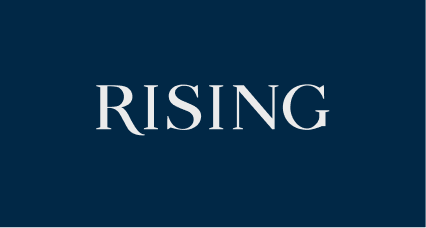
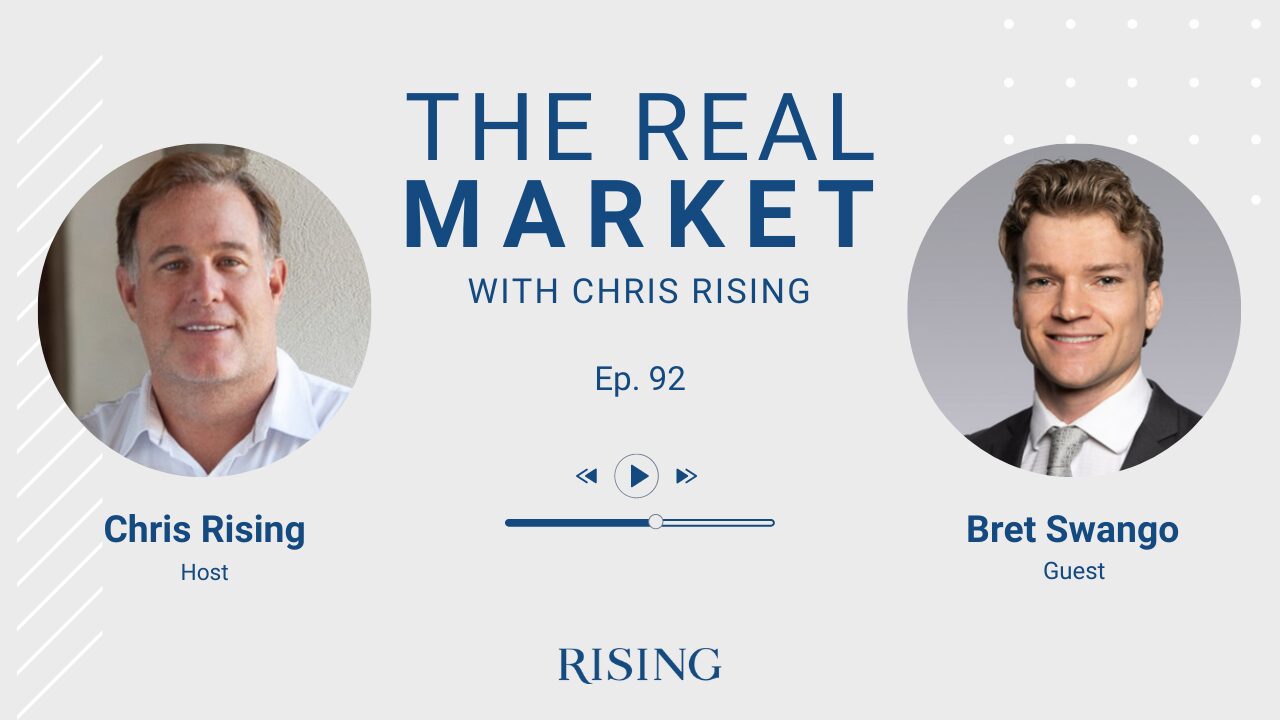
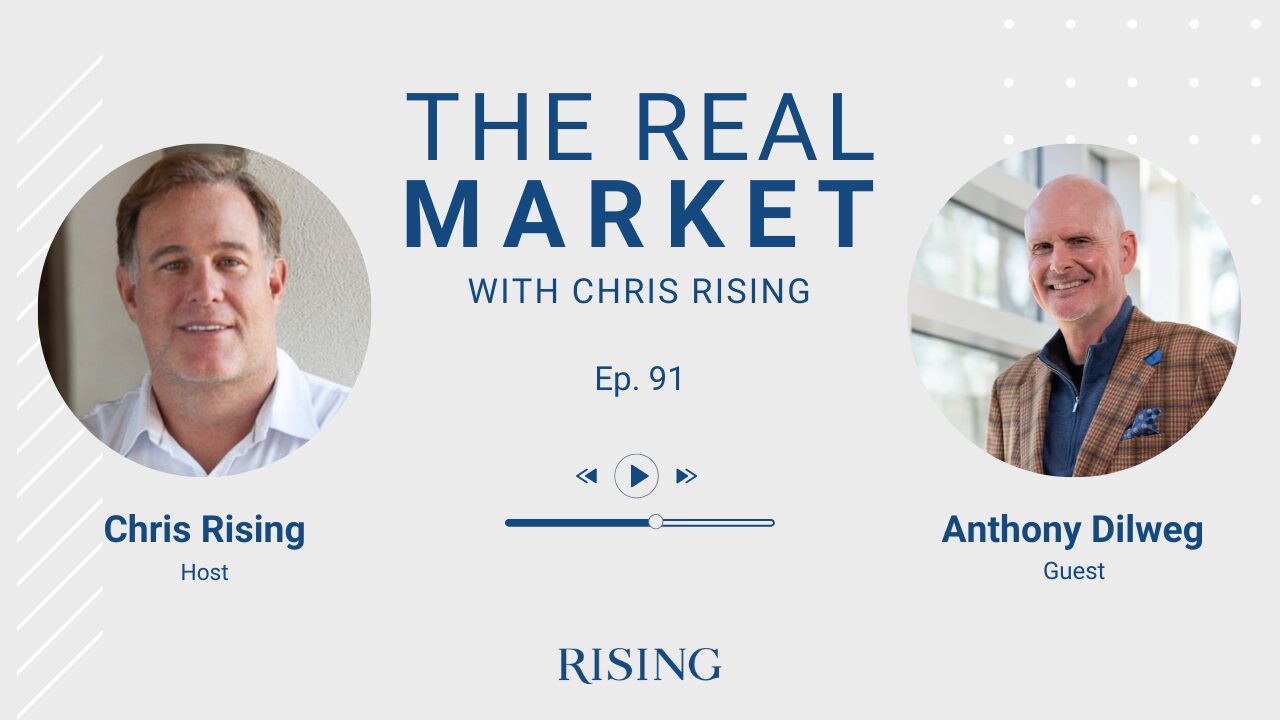
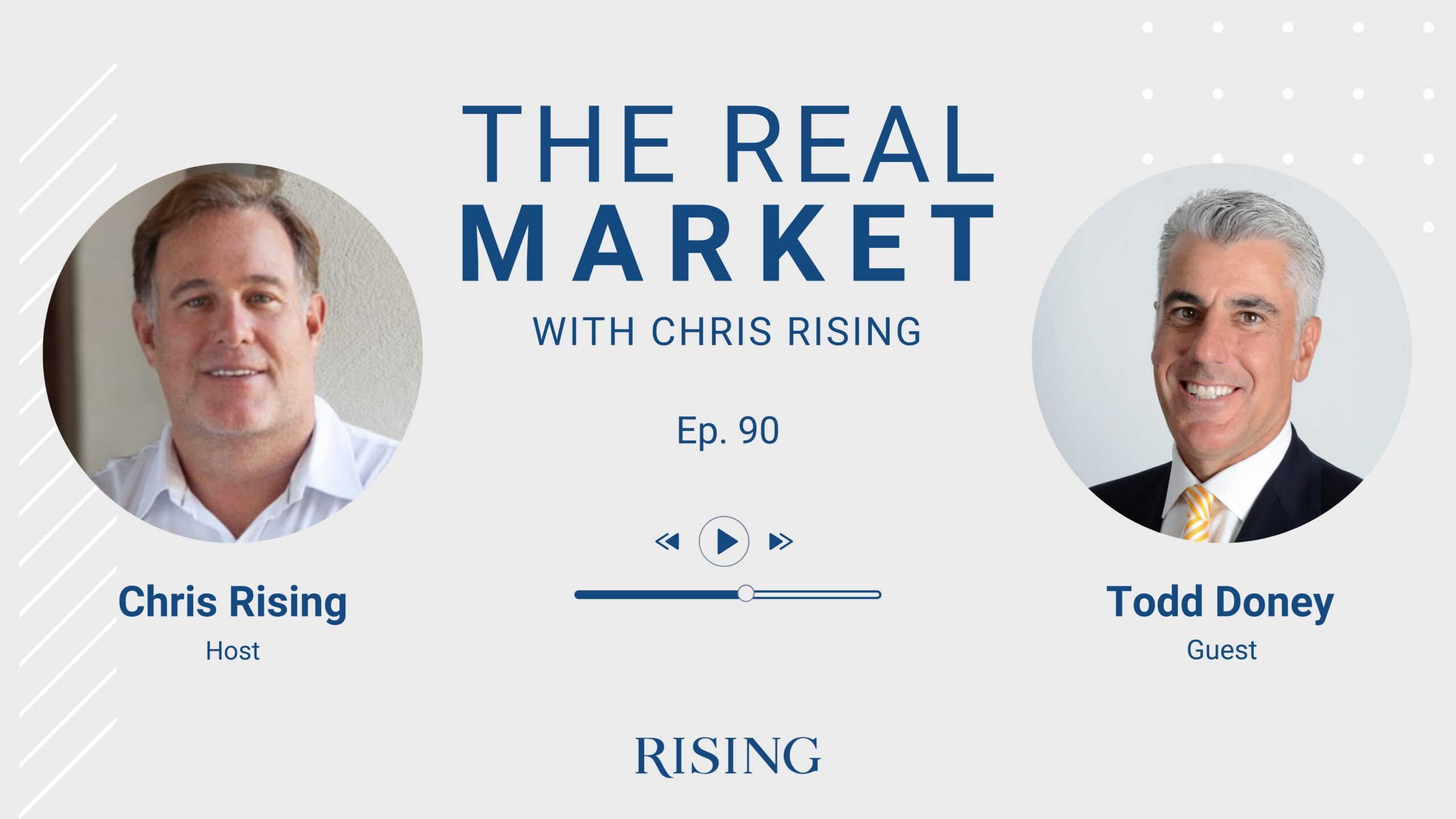
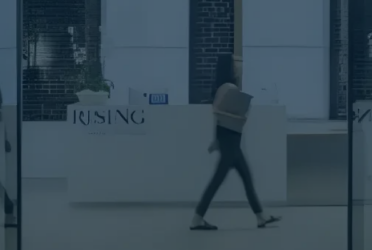
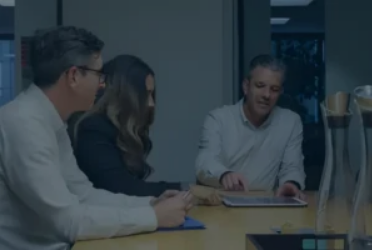
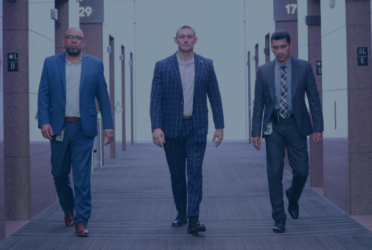
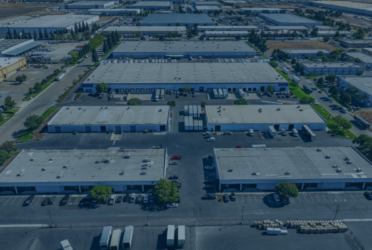
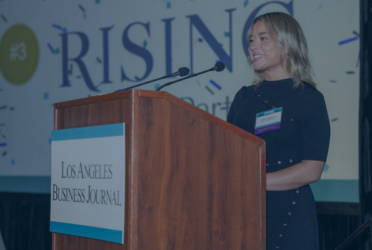
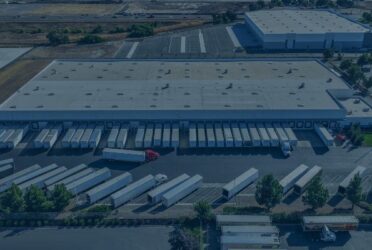
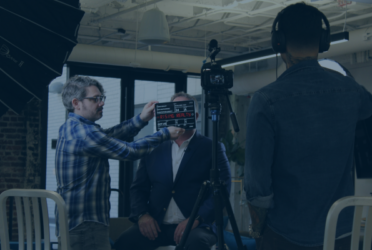
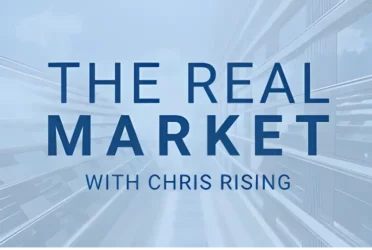 Podcast
Podcast